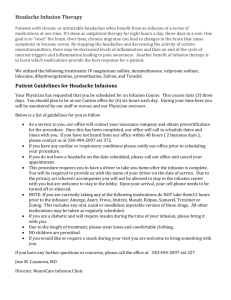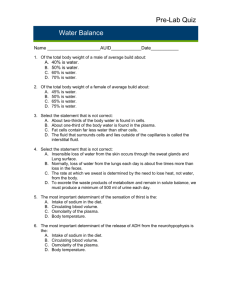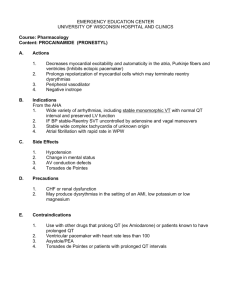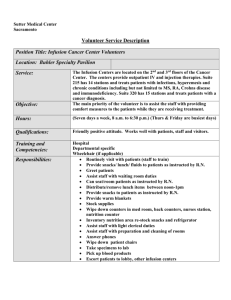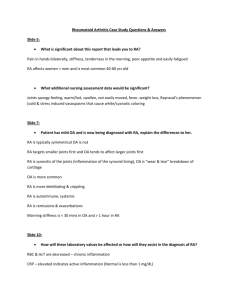HUMAN - Renal Physiology - Sodium Infusion The purpose of
advertisement
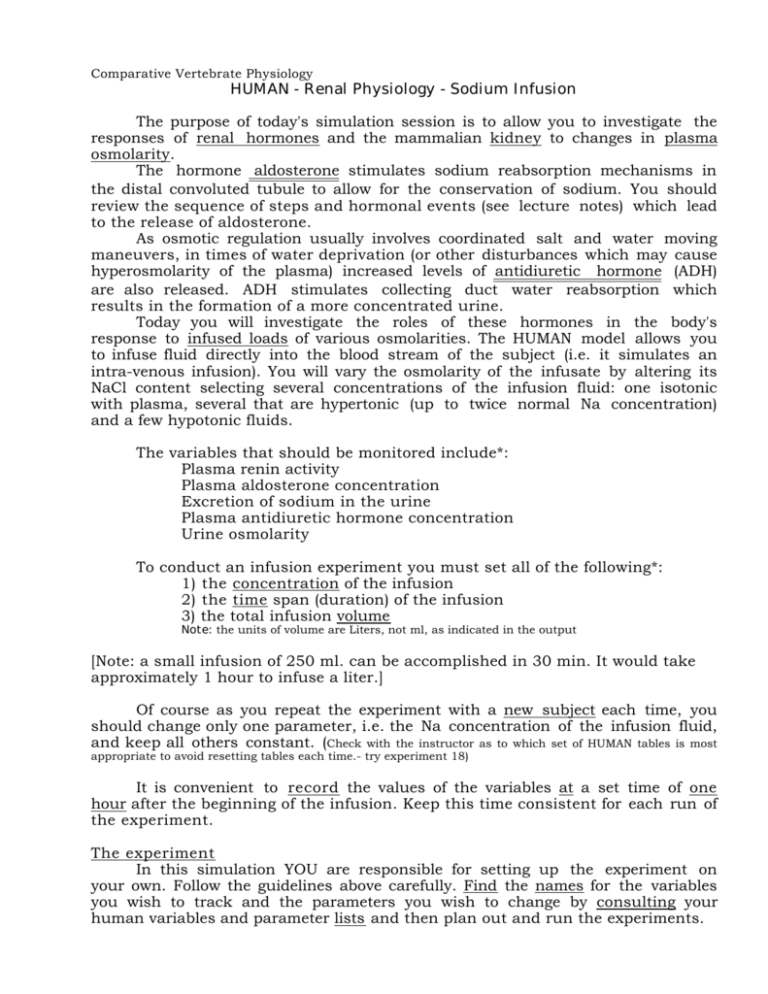
Comparative Vertebrate Physiology HUMAN - Renal Physiology - Sodium Infusion The purpose of today's simulation session is to allow you to investigate the responses of renal hormones and the mammalian kidney to changes in plasma osmolarity. The hormone aldosterone stimulates sodium reabsorption mechanisms in the distal convoluted tubule to allow for the conservation of sodium. You should review the sequence of steps and hormonal events (see lecture notes) which lead to the release of aldosterone. As osmotic regulation usually involves coordinated salt and water moving maneuvers, in times of water deprivation (or other disturbances which may cause hyperosmolarity of the plasma) increased levels of antidiuretic hormone (ADH) are also released. ADH stimulates collecting duct water reabsorption which results in the formation of a more concentrated urine. Today you will investigate the roles of these hormones in the body's response to infused loads of various osmolarities. The HUMAN model allows you to infuse fluid directly into the blood stream of the subject (i.e. it simulates an intra-venous infusion). You will vary the osmolarity of the infusate by altering its NaCl content selecting several concentrations of the infusion fluid: one isotonic with plasma, several that are hypertonic (up to twice normal Na concentration) and a few hypotonic fluids. The variables that should be monitored include*: Plasma renin activity Plasma aldosterone concentration Excretion of sodium in the urine Plasma antidiuretic hormone concentration Urine osmolarity To conduct an infusion experiment you must set all of the following*: 1) the concentration of the infusion 2) the time span (duration) of the infusion 3) the total infusion volume Note: the units of volume are Liters, not ml, as indicated in the output [Note: a small infusion of 250 ml. can be accomplished in 30 min. It would take approximately 1 hour to infuse a liter.] Of course as you repeat the experiment with a new subject each time, you should change only one parameter, i.e. the Na concentration of the infusion fluid, and keep all others constant. (Check with the instructor as to which set of HUMAN tables is most appropriate to avoid resetting tables each time.- try experiment 18) It is convenient to record the values of the variables at a set time of one hour after the beginning of the infusion. Keep this time consistent for each run of the experiment. The experiment In this simulation YOU are responsible for setting up the experiment on your own. Follow the guidelines above carefully. Find the names for the variables you wish to track and the parameters you wish to change by consulting your human variables and parameter lists and then plan out and run the experiments. * To locate the HUMAN code names for the Table and Parameter items listed above, use your browser's Find...(in page) function to search the on-line HUMAN variables list (see HUMAN Infusion Checkup below for 'practice') The Lab Analysis/Write-up (Full style) or see modified instructions for 'short' write-up Give some background introduction information on the functions of aldosterone and ADH in the control of kidney function and plasma osmolarity. Include at least one reference (the text is acceptable). Your introduction should predict, in general terms, the responses to the various infusions. up. It is not necessary (or sensible) to do a Methods section in a HUMAN write- Your Results section should include a graph (or series of graphs) that illustrate one set of relationships between the hormones and the renal functions that they control (e.g. you may line up two or more curves on a page so that the reader can see a parallel or inverse relationship). As always, include a narrative part to the results section which describes the patterns seen in the data. Your discussion explicates how your data illustrate the function of a/the renal hormone(s) in regulating plasma osmolarity. * Short - form report do only the results and an abbreviated discussion section no more than 2 pages of plots ( 1 is preferred) no more than one page of typed text in your analysis. Comparative Vertebrate Physiology HUMAN Infusion Checkup I. Run the model under normal conditions for 15 min. and fill in the value for each of the following variables and parameters:(purpose: can you find needed variable names) Description ____________ [aldosterone] plasma [ADH] in plasma [potassium] in urine [sodium] in infusate volume of an infusion HUMAN name ____________ ____________ ____________ ____________ ____________ ____________ Value ________ ________ ________ ________ ________ ________ Units _______ _______ _______ _______ _______ _______ II. In a newly initialized subject, infuse one liter for a one hour period a solution having one half the normal Na concentration. Fill in the values below. (purpose: Can you successfully carry out an infusion) Time ______ Plasma [Na] __________ Urine [Na] __________ Urine [Osm] __________ Plasma[Osm] __________ Start __________ __________ __________ __________ 30 min. __________ __________ __________ __________ 60 min. __________ __________ __________ __________


